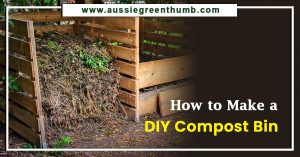Crop rotation is a practice that’s talked about ad nauseam in the gardening world but has the idea passed its use by date? It’s a theory that’s been used since the Roman Empire gaining momentum via agrarian farmers in the Middle Ages.
The idea suggests that growing the same plants in the exact spot or bed they’ve previously been grown in will eventually deplete the soil of its fertility and increase the risk of soil-borne diseases and pests.
More...
For the past few decades, we’ve tried to go against conventional thinking and have resourced our gardens with a plethora of pesticides, herbicides, and chemical fertilisers. These inorganic products have allowed us to grow our annual crop of tomatoes, melons, and corn in the same vegie patch without ever having to rotate their positions.
And what have we achieved? Pandora’s box filled with problems. It appears that our forefathers might have been right on the money with their idea of crop rotation.
So, how does crop rotation work? And is it just a matter of moving crops each year so that they don’t grow in the same beds?

What is Crop Rotation?
There’s more to crop rotation than just rotating crops. It’s a mix of science and art – like most things. Rotating crops is all about trying to use each crop so that it achieves the best produce but also leaves the soil in a better condition for the next crop.
For example, beans and peas add nitrogen to the soil and tomatoes and capsicums love nitrogen. So, it would make sense to grow the beans prior to your crop of solanaceous vegetables.
There are seven main family types of vegetables that the home grower might want to plant in their vegie patch.
- Brassicas – Cabbage, cauliflowers, brussels sprouts, broccoli, Asian greens
- Legumes – Beans and peas
- Umbellifers – Potatoes, carrots, parsnips, swedes, celeriac, turnips
- Alliums – Onions, garlic, leeks
- Solanaceae – Tomatoes, aubergines (eggplant), capsicum
- Cucurbits – Cucumbers, squash, marrow, pumpkins, gourds
- Mesclun – Lettuces, chard, kale, silverbeet, rocket
These vegetables can be grown in a number of ways, and it depends primarily on the amount of space you have.
Types of Crop Rotation
Ideally it would be best to have 8 beds so that each vegetable type could grow a season in their own bed leaving one fallow for a season and then rotating them around.
However, very few home gardeners have the luxury of this much space so it takes some coordination to grow these crops and rotate them in fewer beds. Here’s a few options.

Six Bed Crop Rotation
Combine your Solanaceae and Cucurbits into one bed, keep the Alliums by themselves and Legumes into another. Your Brassicas and Mesclun can be planted into yet another and your Umbellifers are kept by themselves.
The sixth bed is left fallow to be planted with a green manure like clover, barley, or rye grass. The fallow bed for the next year is the one that the Solanaceae and Cucurbits grew in.
They follow the Legumes which follow the Alliums. These follow the Brassicas, and they follow the Umbellifers.
Five Bed Crop Rotation
Combine your Solanaceae and Cucurbits into one bed, Alliums and Legumes into another, your Brassicas and Mesclun into yet another and your Umbellifers by themselves. The fifth bed is left fallow to grow a green crop and have compost added.
The Solanaceae bed becomes the fallow one next year as they follow the Legumes and Alliums. These follow the Brassicas, and they follow the Umbellifers.
Four Bed Crop Rotation
Combine your Solanaceae, Alliums, Cucurbits and Legumes into one bed, your Brassicas and Mesclun into another and your Umbellifers are kept by themselves. The fourth bed is left fallow, and a green manure is grown.
Your Solanaceae bed becomes the fallow one next year and these follow Brassicas while they follow the Umbellifers. The rooting vegetables get first shot at the new bed each year.
Crop rotation can be achieved without leaving a bed fallow for a whole year however it should at least be left to grow a green crop over one season and composted heavily.
Many gardeners are now divided over whether crop rotation is a worthwhile endeavour and those that disagree support the view that companion planting can solve many of the problems that rotating crops can do without the effort.
Published on June 3, 2023 by Gary Clarke
Last Updated on June 5, 2024




